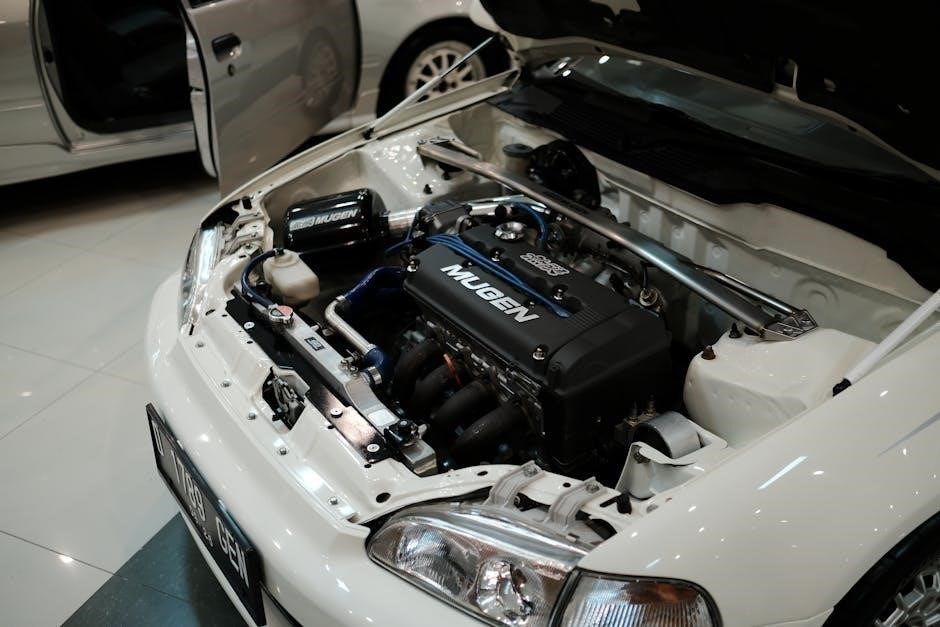Sheva Brachot are seven blessings recited during Jewish wedding ceremonies, celebrating the union of a couple. These blessings express gratitude for creation, partnership, and joy, central to the celebration.
Definition and Significance
Sheva Brachot, or the “Seven Blessings,” are a central part of Jewish wedding ceremonies and celebrations. These blessings are recited to express gratitude for the creation of humanity, the joy of marriage, and the union of the couple. They emphasize the sanctity of marriage and the divine role in human relationships. The Sheva Brachot are not only recited during the wedding ceremony but also during the seven days following the wedding, as part of festive meals. These blessings are deeply rooted in Jewish tradition and serve as a way to celebrate love, commitment, and the divine plan. Their significance lies in their ability to connect the couple and their community to timeless spiritual values and shared joy.

Historical Background of Sheva Brachot
Sheva Brachot, or the “Seven Blessings,” have origins in Talmudic sources, with roots in Jewish liturgical traditions. These blessings have evolved over centuries, reflecting the sanctity of marriage and divine Providence.
Origins in Jewish Tradition
The Sheva Brachot, or Seven Blessings, trace their origins to Talmudic texts, specifically in the Talmud’s discussions of wedding ceremonies and benedictions. These blessings are rooted in ancient Jewish liturgical practices, designed to consecrate the union of a couple. The Talmud emphasizes the importance of celebrating marriage with joy and divine acknowledgment, as seen in the phrase “Blessed are You, Lord our God, Who has created joy and gladness, bridegroom and bride.” This foundational text underscores the blessings’ role in expressing gratitude for the creation of humanity and the institution of marriage, reflecting the deep spiritual significance of matrimony in Jewish tradition.
Structure and Content of Sheva Brachot
Sheva Brachot consists of seven blessings, each highlighting a unique aspect of marriage and creation. They flow from praising God’s work to celebrating the couple’s union and joy.
The Seven Blessings Explained
The seven blessings, known as Sheva Brachot, are central to Jewish wedding ceremonies. The first blessing praises God for creating the vineyard, symbolizing abundance and joy. The second blesses the creation of humanity in God’s image, emphasizing the sanctity of human relationships. The third acknowledges God’s work in forming humanity and the unique bond between partners. The fourth expresses gratitude for the joy of marriage, while the fifth and sixth celebrate the couple’s happiness and the reunion of God with His people. The seventh blessing, recited over wine, seals the ceremony, invoking divine favor and blessings for the newlyweds.

Customs and Traditions Surrounding Sheva Brachot
Sheva Brachot celebrations include festive meals, toasts, and communal gatherings, honoring the newlyweds with blessings, songs, and joyous rituals to mark their union and new life together.
Practices During the Wedding and Beyond
During the wedding ceremony, the Sheva Brachot are recited under the chuppah, typically by a rabbi or honored guest. A cup of wine is used, and the blessings are recited aloud. The couple sips from the cup after the final blessing, symbolizing their union. Beyond the ceremony, Sheva Brachot are recited during festive meals for seven days following the wedding. These gatherings, known as Sheva Brachot celebrations, involve family and friends rejoicing with the newlyweds. Songs, toasts, and words of wisdom are shared, emphasizing the joy and sanctity of marriage. The practices reflect a deep communal connection, celebrating the couple’s happiness and the divine blessing of their union.

How to Find and Use Sheva Brachot PDF Resources
Sheva Brachot PDFs are available on Jewish educational websites, offering guides for recitation and understanding. Downloadable resources include blessings in Hebrew, English, and transliteration for easy use during ceremonies and celebrations.
Online Sources and Guides
Sheva Brachot PDF resources are widely available online, offering detailed guides for recitation and understanding. Websites like Hazon and other Jewish educational platforms provide downloadable materials. These resources often include the blessings in Hebrew, English, and transliteration, making them accessible for all participants. Many guides explain the meaning behind each blessing, enhancing the spiritual experience. Additionally, some websites offer customizable PDFs for specific ceremonies or celebrations. These resources are invaluable for officiants, couples, and guests alike, ensuring the traditions are observed with precision and intention. By utilizing these guides, one can deepen their connection to the Sheva Brachot and the joyous occasion they commemorate.
Cultural and Regional Variations
Sheva Brachot vary across cultures, with differences in melody, language, and customs reflecting regional Jewish traditions and enhancing the celebration’s diversity and richness.
Differences in Recitation and Celebration
The recitation and celebration of Sheva Brachot vary significantly across Jewish communities. Ashkenazi and Sephardic traditions often differ in melody and wording, reflecting regional customs. In some communities, the blessings are sung with distinctive tunes, while others recite them in a more subdued manner. Additionally, the involvement of the congregation can differ, with some traditions encouraging active participation and others focusing on the officiant. Cultural influences also shape the celebration, such as incorporating local languages or musical styles. These variations highlight the rich diversity of Jewish practice and the adaptability of Sheva Brachot to different cultural and regional contexts.

Modern Interpretations and Adaptations
Modern couples often personalize Sheva Brachot, incorporating inclusive language and contemporary themes. Officiants may adapt the blessings to reflect diverse love stories and evolving societal values.
Contemporary Perspectives on Sheva Brachot
Contemporary perspectives on Sheva Brachot emphasize personalization and inclusivity, allowing couples to tailor the blessings to reflect their unique love stories and values.
Modern officiants often adapt the traditional blessings to resonate with diverse experiences, ensuring the ceremony feels authentic and meaningful to all participants.
Digital resources, such as Sheva Brachot PDF guides, provide couples with accessible tools to explore and customize these sacred blessings, blending tradition with modern creativity and sensitivity.
Practical Applications and Usage
Sheva Brachot are recited during the wedding ceremony and repeated in Birkat Hamazon (Grace After Meals) for seven days post-wedding, fostering joy and blessings in daily life.
Integrating Sheva Brachot into Jewish Life
Sheva Brachot enrich Jewish life by extending blessings beyond the wedding ceremony. These seven blessings are recited during Birkat Hamazon for seven days post-wedding, fostering ongoing joy and divine connection. Communities often gather to share in these recitations, strengthening communal bonds and spiritual observance. Accessible resources, like Sheva Brachot PDF guides, help individuals and families incorporate these traditions seamlessly into daily and celebratory meals. By doing so, the blessings become a meaningful part of Jewish practice, preserving cultural heritage and nurturing faith. This integration ensures that the joy and sanctity of the union are celebrated not just on the wedding day, but in the days and weeks that follow, reinforcing the importance of marriage and community in Jewish life.

























